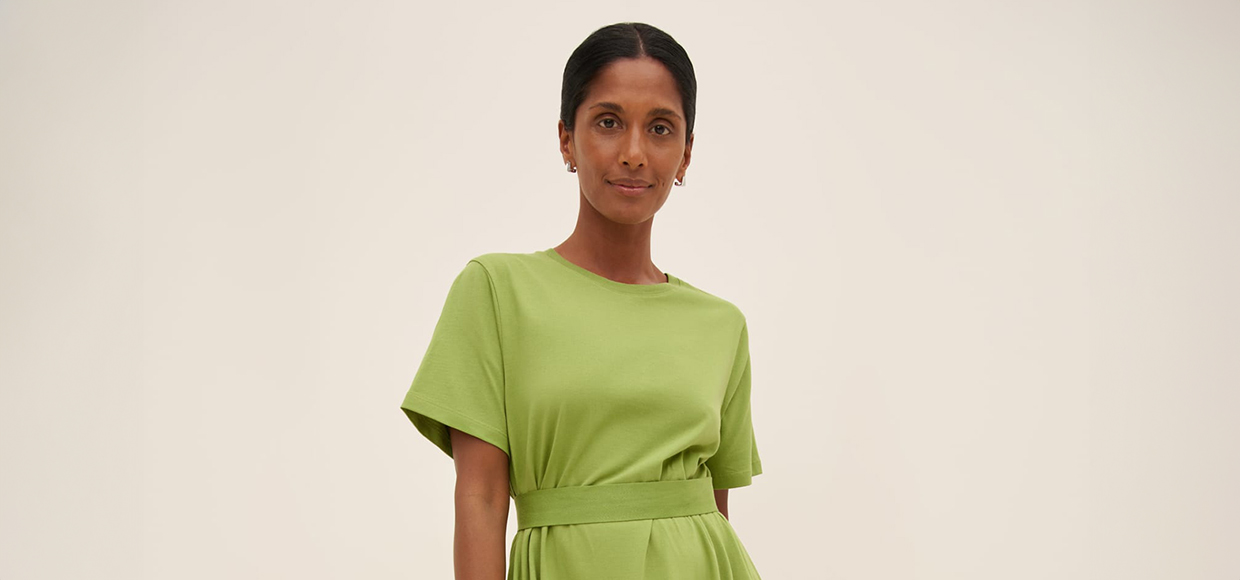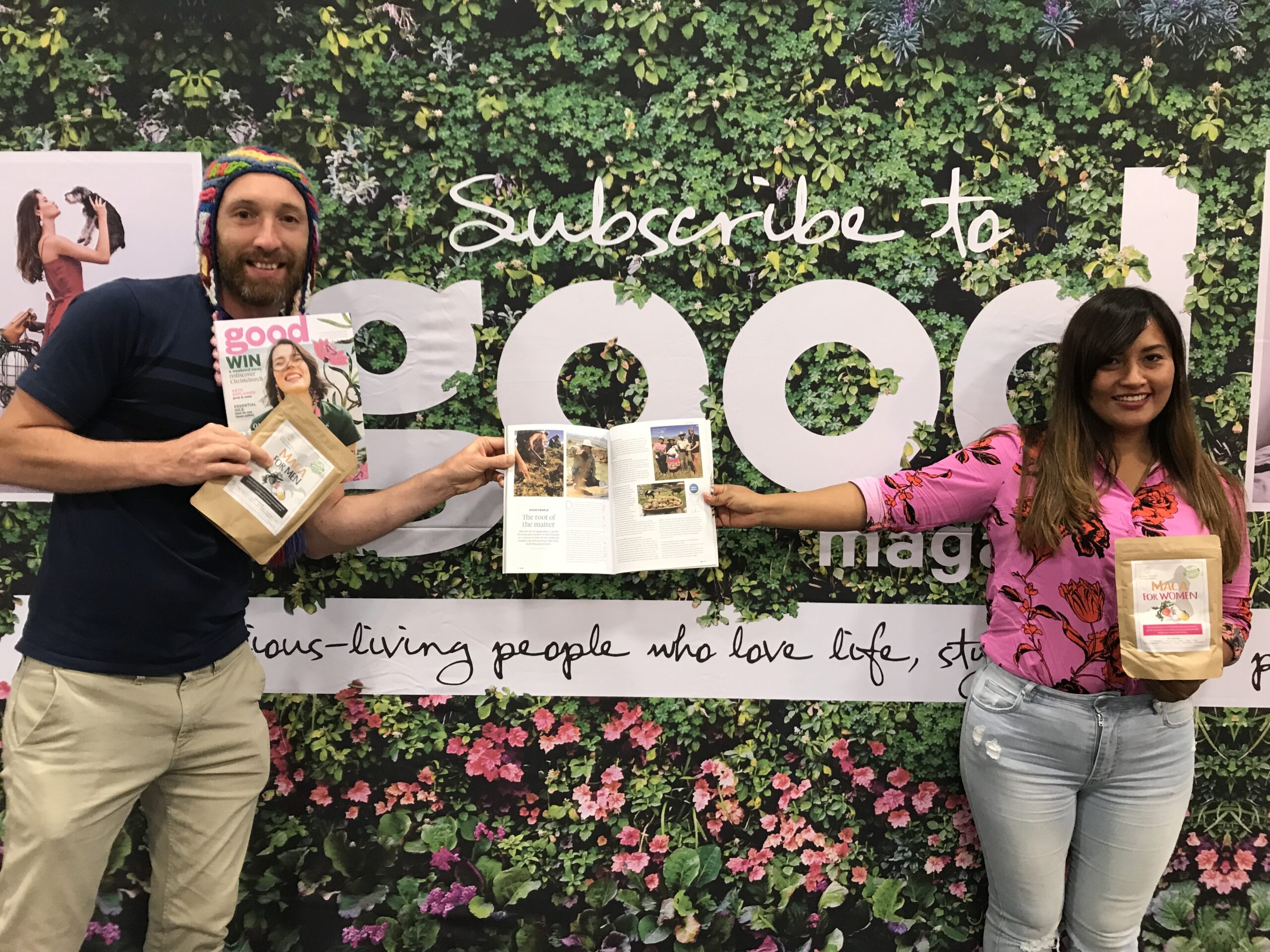Surfacing from my plunge into Lake Hāwea I can taste pure, clean, water on my tongue and I can’t help but take another sip from the glacial lake. It’s so sweet. I haven’t tasted water like this since I was a child, drinking from an alpine stream in the tussock land on Mt Ruapehu.
My body sings with the memory and the new one I’m making, laughing gleefully as I now float on my back and take in the wonder around me. The mountains, the blue of the lake, marvelling at the abundance of quartz crystal stones on the lake floor beneath me and the smiling face of Nat, founder of The Secret Sauna at Lake Hāwea who’s already in on this incredible secret.
She shares she had the same feeling when she first came here. “When you swim, you see quartz crystals everywhere and your skin, hair and soul feel amazing,” Nat says. “There’s something healing about this lake, and I knew I wanted to stay, and create a healing space to share with others here.”

Six months ago Nat moved her purpose-built wooden barrel sauna onto the shores of Lake Hāwea with the permission and blessing of the owners of The Camp Lake Hāwea, where she is based. The sauna is on wheels, so it can be moved at any time. Soft sun loungers surrounding the sauna provide a place to enjoy a hot herbal tea blend made from herbs that Nat grows in a little onsite garden.
It’s a change of lifestyle for the former film worker who found herself on a job in the south and realised there wasn’t a standalone sauna in the area that wasn’t attached to a hotel or gym, and the seed for The Secret Sauna was born.

And it really is unlike any other sauna in New Zealand. It has been voted by a New Zealand Finnish Facebook group as being most authentically close to a Finnish sauna experience.
A half-moon window frames the view over the lake and to the mountains beyond. Pipe music plays in the background while you soak up the heat of the wood fired space, and your plunge pool isn’t a chest freezer ice bath but a beautiful, sparkling freshwater lake.

The recent addition of two yurts beside the sauna now provide a changing area, a place to enjoy a massage and other natural therapies, and an opportunity to flop onto possibly the biggest beanbag in the universe.
Directly opposite, across the lake is Lake Hāwea Station, the working farm of entrepreneurs and environmentalists Geoff and Justine Ross who are paving the way forward in New Zealand with their regenerative farming methods and animal welfare practices. It’s Australasia’s first Certified Climate Positive Farm.
Lake Hāwea Station, affectionately known as LHS, also offers luxury accommodation on the farm and I’m lucky enough to have been invited as their guest.

LHS encompasses 6500 hectares but only accommodates 14 guests at a time. When I’m there they are at full capacity though I never see anyone. My abode is Little L, a tiny home in a paddock kitted out with a queen size bed fitted with sheets made from spray-free cotton and commanding a view of the mountains and lake. It also has a fence around it because LHS is a working farm and getting here requires driving through a paddock. As I sit on the small deck at sunset, glass of Māori Point Chardonnay in hand, the cows are so close I can hear them contentedly chewing the grass. Part of the experience is getting amongst it!
On station activities for visitors include planting a native tree, e-bike hire (the Te Araroha trail runs through the property and is wide enough for e-bikes, walkers and runners), in-house massages, fishing and packed picnic lunches while on-station tours include back country immersion, astronomy, farm regeneration, a beech tree remnant wander and “Earth stewards” for young environmentalists.
With LHS experiences and education manager Richie Laming as my guide I do a tour of the historic sheep and beef station with a team working to prove farming can help heal the planet, and after viewing the operation I believe that it can. We visit a field planted with a mixed species crop and Richie explains how these interact with and supercharge the soil while also providing a variety of palatable foods for the sheep to graze.

“The whole idea is that they eat a third and leave a third because that promotes coverage on the ground, and trample a third. Because they are pooing and weeing as they move through, they are stamping organic matter into the soil which supercharges the health of the soil,” Richie explains.
From here we head to the high country, up to the saddle at 1225 metres. Getting here is not for the faint hearted though it is not my first side-by-side 4×4 high country farm rodeo. The ride up to the saddle through the heart of Homespur Valley is steep and bumpy. My eyes, however, are glued to the beauty of the dramatic mountain landscape. Up here, my body sings again as I stand amongst the tussock and revel in the silence as I breathe in the clean mountain air.
A back country panorama opens out before us, the hills swathed in gleaming golden tussock. As Justine Ross describes beautifully in her must-read book Meet You at The Main Divide, “it’s like a woman has discarded her voluminous caramel-coloured silk gown. You are staring across its gentle creases and folds – the sheen of the silk is the sun on moving tussock”.

Our final stop on the tour is the Loom, LHS HQ, which overlooks the lake as well as a man-made water feature and rocket ship sculpture (apparently representing Geoff Ross “who is a rocket ship of ideas”). We enjoy the view with a cuppa and a piece of freshly baked banana bread slathered in butter. I want to stay here forever but Lake Wānaka is calling me, too.
Everywhere you drive in the region is jaw-droppingly picturesque. I recommend the there-and-back drive to Mt Aspiring – a mostly gravel road with cattle stops and a ford, flanked by mountain ranges and waterfalls. And stopping off along the way to do the Rocky Mountain and Diamond Lake three-hour loop track.
Incredibly this is my first proper visit to Wānaka though it feels familiar thanks to Rita Angus’s paintings, particularly the one brought to life by the Museum of New Zealand Te Papa’s 12-minute film, A Painter’s Journey: Rita Angus’s Central Otago (watch it on YouTube!) which features #thatwanakatree. A lone tree sprouting from the lake set against a backdrop of the Southern Alps. Putting the hashtag into Google maps helped me find the location which was heaving with tourists jostling for a space to get a photo with the famous tree.
A contrast to Lake Hāwea which is only a 25-minute drive away.
Being on the tourist map, Wānaka township has an extraordinary number and variety of restaurants for a town of its size. At its peak the area attracts around 300,000 visitors per year. The resident population sits at approximately 7,000 and the community recognises that its pristine environment is vulnerable. Not only from the impact of tourism but also global warming and shorter winter seasons, which has recently led to the establishment of Love Wānaka Community Fund supporting the regeneration of Wānaka’s natural environment.

I catch up with Love Wānaka coordinator Ash Bickley over dinner at local eatery Muttonbird to find out more while we tuck into a plate of award-winning Royalburn lamb. I learn that the fund was developed in partnership with Lake Wānaka Tourism but is its own charitable entity.
“We hope to invite our visitors to explore this place in a sustainable way and also provide the opportunity to give back,” Ash explains. “Whether that is a financial contribution or by lending a hand to support local environmental initiatives. We are looking at how we can evolve the way that we do business in Wānaka and ensure that tourism here is a positive driver for environmental action.”
One initiative is the establishment of water drums, which have been set up by local native plant nursery Te Kākano, with Love Wānaka encouraging visitors to lend a hand by watering plants whilst on their walks or bike rides around the lake.

The lovewanaka.co.nz website also lists planting, plant maintenance and wetland restoration events if you want to coordinate a day of volunteering with your visit. And it’s not just targeting offshore visitors but anyone who comes to Wānaka including people with holiday homes in the area.
“Something we hear a lot is people wanting to feel a sense of connection to Wānaka and being part of the community and what better way to do that than to go and join a local volunteer crew or pop down to the community garden,” says Ash.
And it’s a different side of Wānaka that you don’t always get to see.






